Autobot Megatron: Redefining a Villain
How a Toy Gun Became a Dynamic Character in Comic Book Form
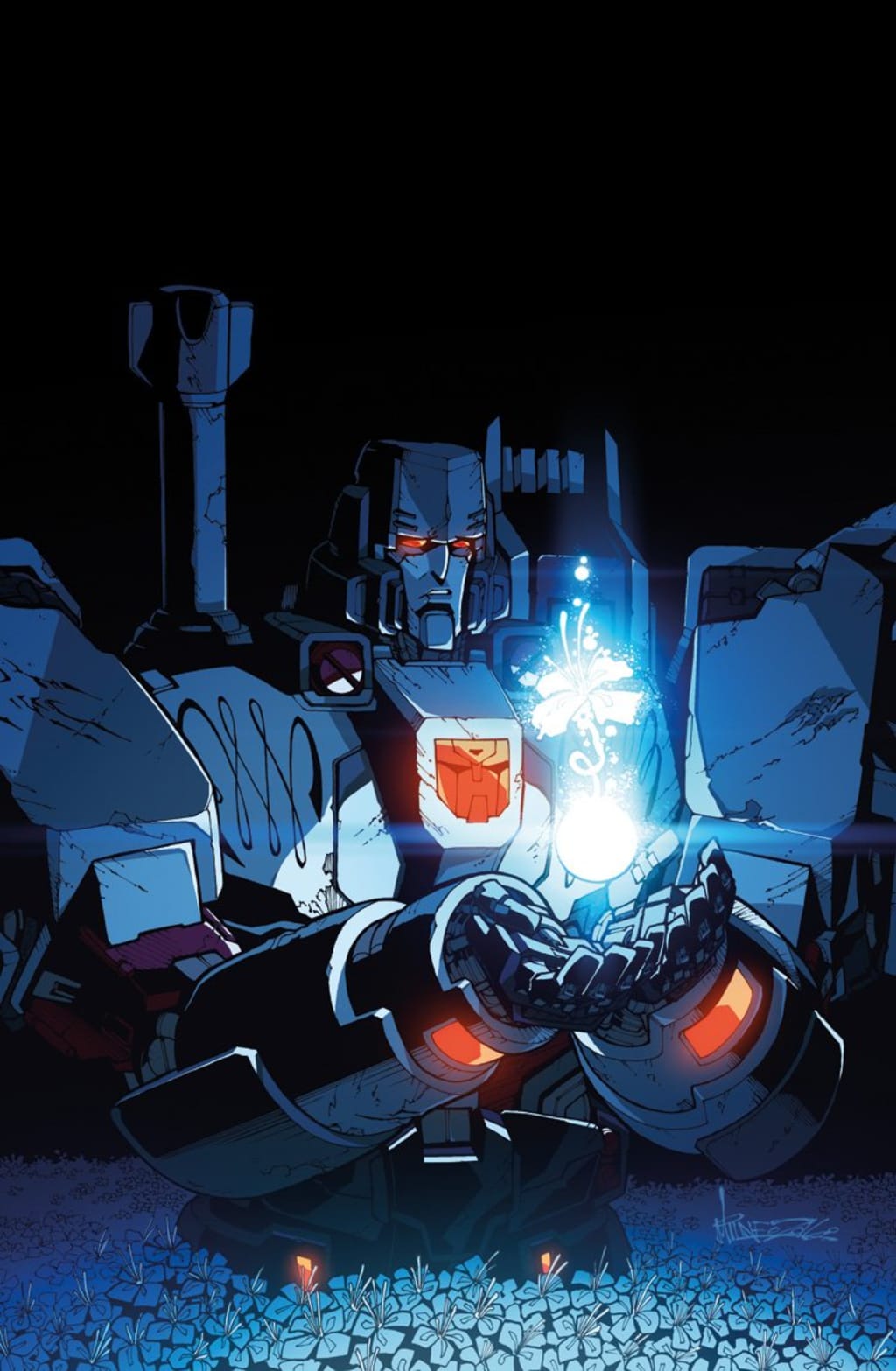
Nostalgia is in. There's no getting around it. Whether it be the bombardment of Hollywood reboots/remakes or the prevalence of cultural references, our modern media culture practically worships the pop culture of old.
Most prevalent in this respect is the 1980s. Numerous media in recent years across all forms have looked back in nostalgia; from Ready Player One in literature, to Stranger Things in television, and Metal Gear Solid V, the 80s are everywhere. They are in. They are hot. They are here to stay.
Amidst this appreciation is the Transformers franchise. Started in 1984 as a joint effort between Hasbro and Takara Tomy, the transforming alien robots have been a constant sight both on toy shelves and television screens for nearly 40 years now. And they don't seem to be leaving anytime soon.
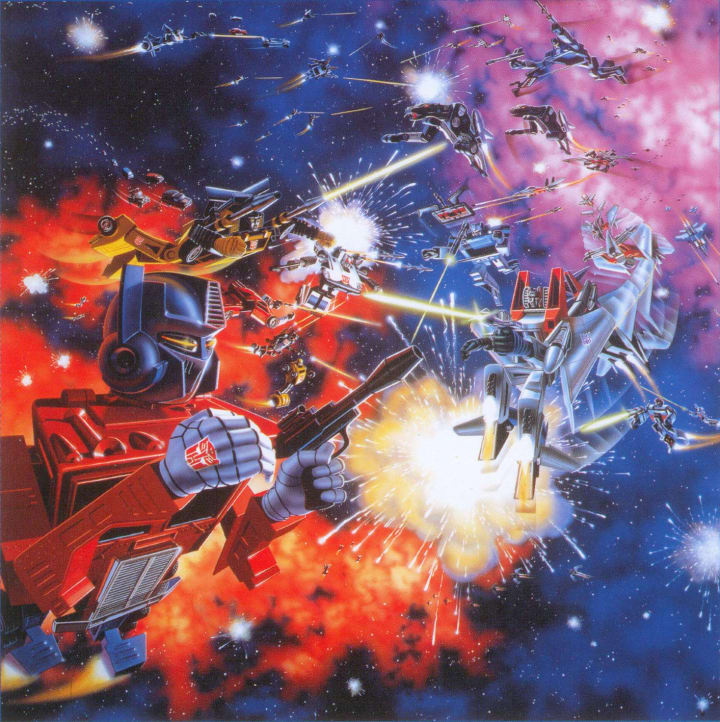
Original 1984 box art depicting the Cybertronians' conflict.
At the forefront, there have always been 4 constants: Autobots, Deceptions, Optimus Prime, and Megatron. The two factions and their respective leaders are staples of the franchise, appearing in every continuity and always having at least one toy in production.
IDW's Transformers comics are no exception to this unspoken rule. Beginning in October of 2005, they tell the classic story of the noble Autobots fighting the evil Decepticons on our planet Earth. By all accounts and purposes, this is standard stuff.
Where things began to change were in 2007. Running alongside the live action movie by Michael Bay, writer Eric Holmes's miniseries "Megatron Origin" began to tell the beginnings of longtime villain Megatron.
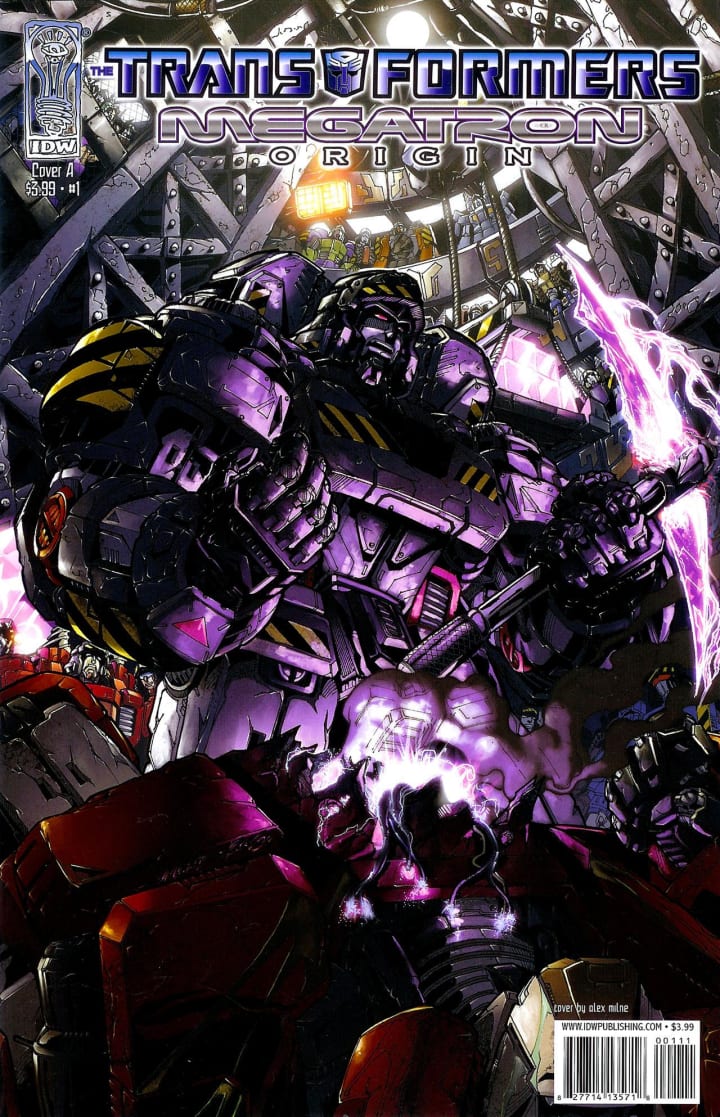
Cover of Megatron Origin Issue 1
Beginning with his original function, Megatron was a mild-mannered Energon miner who was frustrated with the current status quo in the Cybertronian government. It chronicles his journey from timid, disgruntled employee to violent revolutionary, all while depicting the origins of the Decepticon faction.
This was uncharted territory for any Transformers media at the time, animated or otherwise. Few had ever dared to visit a time before the war began, much less before the Decepticons ever existed. This comic provided not just a titular origin, but also a "hero's journey" story to the series' defining villain.
This is the first major step that's been taken towards humanizing this character. He's always been one-dimensional; a child playing at leader. While this wasn't inherently a bad thing in the 80s, times change. Children demand more complex stories. We're past the point where most kids will accept shallow characters and a shallow story, and Megatron reflects this.
This Megatron isn't a one-dimensional bad guy. He isn't some cartoonishly evil, mustache twirling villain. Now he is dynamic. Now he is 3-dimensional. Now he is human.
It would be some time before another glimpse such as this occurred. It was just a side story after all, and the main conflict was still raging in the mainline series. It wouldn't be until 2011's two-part special "Chaos Theory" that the events of Origin were directly acknowledged and built upon.
Critical of note is an exchange between Optimus and Megatron in the first of the two issues. Megatron has been captured and Optimus is trying to decide whether or not to continue holding him in hopes of having a trial, or simply executing him for his innumerable crimes.
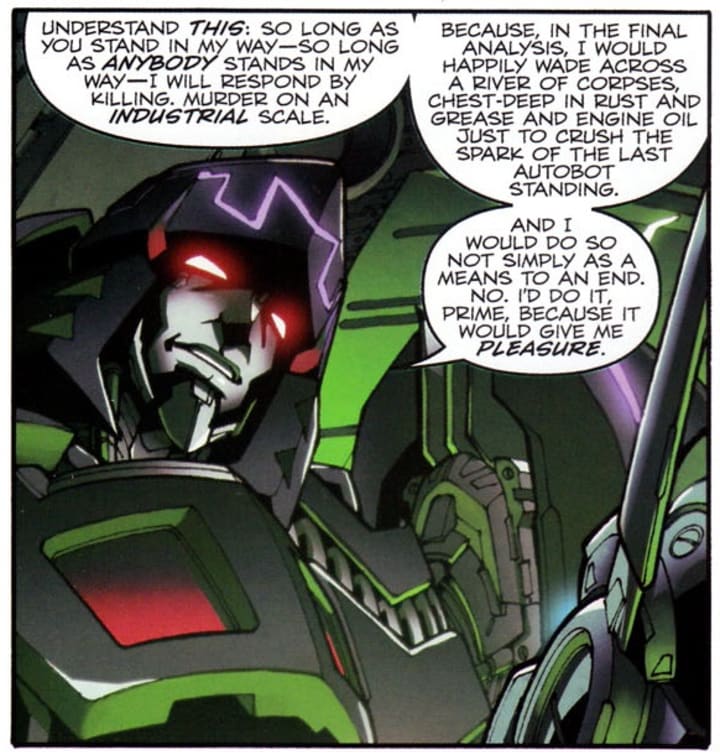
The Transformers (2009) Issue #22
This statement on it's on seems like backtracking to the old kiddie fodder Megatron, but it was all a ruse. Megatron was taunting Optimus into killing him, in order to hurt Optimus in a psychological way. In executing Megatron, he'd make him a martyr, ensuring that the Decepticon cause would live on and continue the war.
IDW's Transformers comics came to an end in the multi-issue event "Chaos" in 2011, which saw the Autobots ultimately emerging victorious. The series then began anew with the single issue "The Death Of Optimus Prime," leading into the two concurrent series "Robots in Disguise" and "More Than Meets the Eye." Megatron remained absent.
It was only until his subsequent re-emergence (and failure at conquest) that his character truly began to reflect on who he was. Spurred on by Bumblebee's words, he realized that he lost his way all those years ago; he had let the system get to him and turn him into a remorseless killing machine. He fought fire with fire and forgot that crucial lesson: winning means turning people to your way of thinking, not dominating them.
Shortly after, former senator and Decepticon Shockwave began to execute his master plan in the 2013–14 crossover event, Dark Cybertron. Megatron placed himself under Bumblebee's command in order to stop him. He still exhibited his old forceful mannerisms, but upon witnessing Bumblebee's death, he decided once and for all to change.
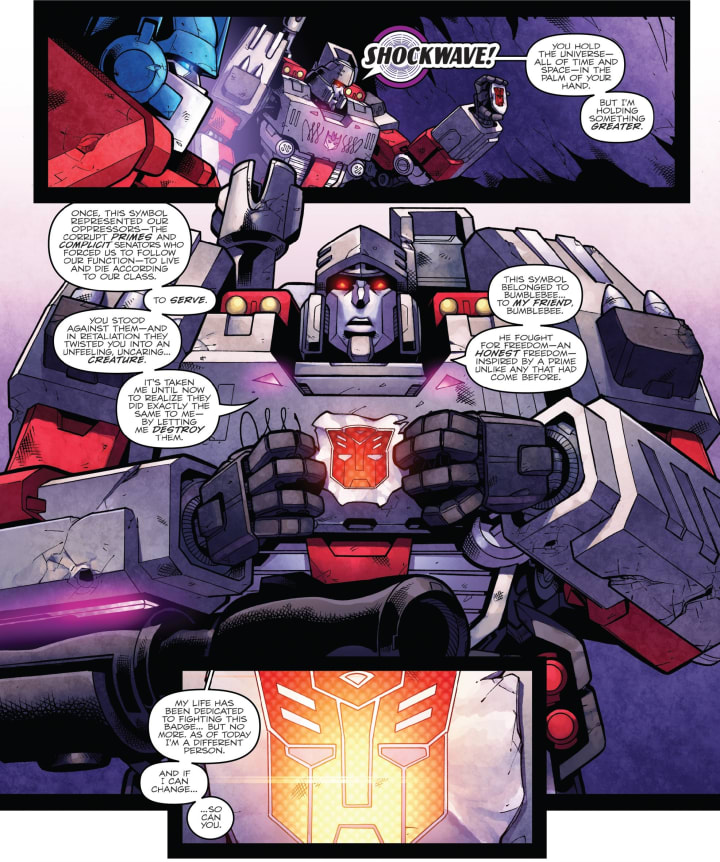
The Transformers: Dark Cybertron Finale (2014)
This event occurred several months after the finale of the Transformers Prime cartoon, which featured a similar revelation. However, Prime merely had Megatron denounce the Decepticon cause. Dark Cybertron took it a step further, and the comics that followed would only reinforce this change of heart.
After Shockwave's defeat, Megatron surrendered to stand trial for his crimes against the universe in More Than Meets The Eye issue #28. The ultimate outcome was that, due to a legal loophole, he could only stand trial before the Knights of Cybertron. As such, he joined the crew of the Lost Light with the caveat that he denounce the Decepticon cause and encourage all who bore the symbol to abandon it.
This was all very abrupt and both fans and characters had a difficult time comprehending why he would do such a thing. In a conversation with Optimus during issue #28, he said he wanted at least one good thing to come of his life before he died. But other than that panel, there was hardly any evidence of his change of heart.
Shortly after, it was revealed that Soundwave remained in disbelief and sent Ravage as a spy to judge Megatron's sincerity. Amidst the chaos of the ship and its crew disappearing, he and Ravage were able to have a one-on-one conversation to set the record straight.
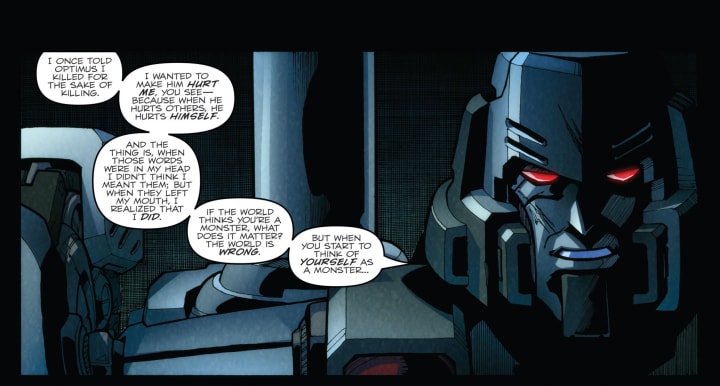
More Than Meets The Eye #32 (2014)
This was the true turning point for his character. His previous declaration was interpreted as comic book "clickbait," and as such wasn't believed by fans. However this conversation set his characterization for the rest of the series. He isn't a two-dimensional warmonger anymore. He's a broken man who has made mistakes and wishes to rectify them. And it's beautiful.
Subsequent issues reinforce this. He refuses to leave the vessel, he renounces violence (for a time), and does all he can to make sure the old warmonger doesn't rear his ugly head once again.
This Megatron is dynamic. He has lived a long and eventful life. He's a reformed genocidal despot. He is, for all intents and purposes, the first true evolution of his character in over 30 years.
Whether or not he remains this way is yet to be determined. Regardless, this beautifully optimistic story about redemption in today's climate is something that all deserve to witness.
About the Creator
Emmanuel Martinez
Just a simple man trying to make my way through the world.






Comments
There are no comments for this story
Be the first to respond and start the conversation.